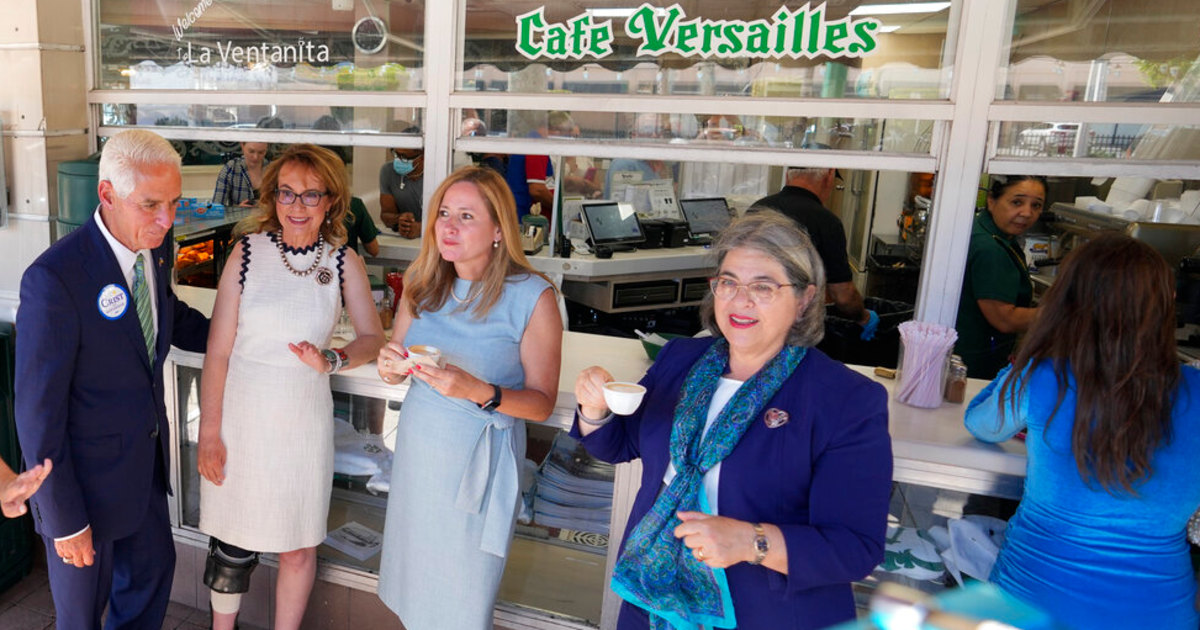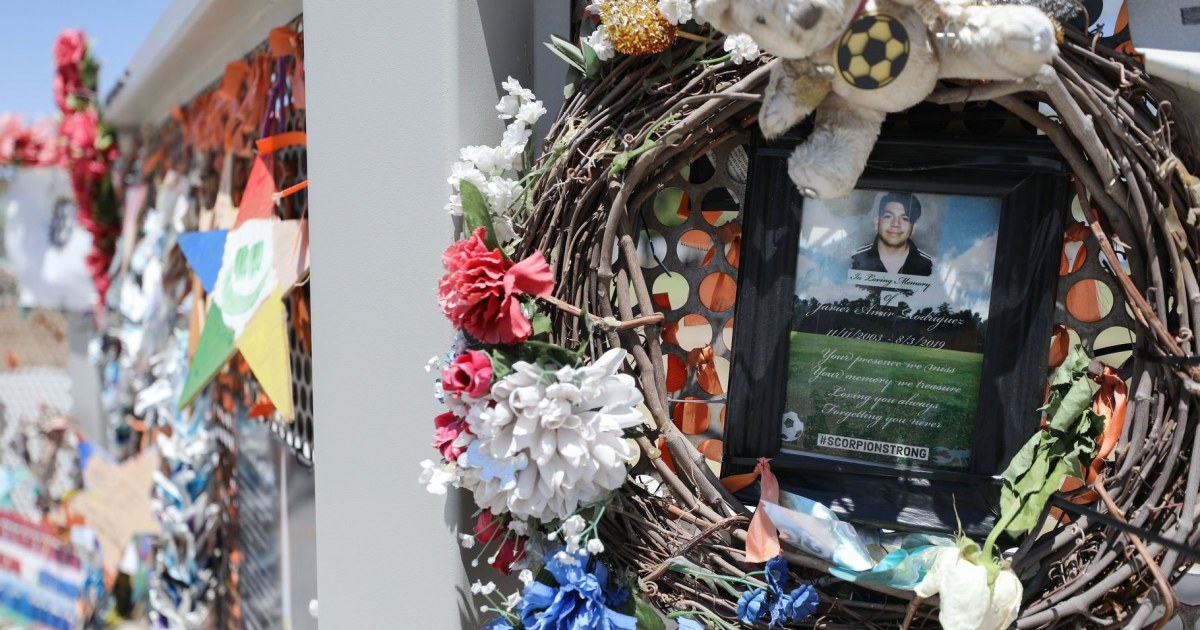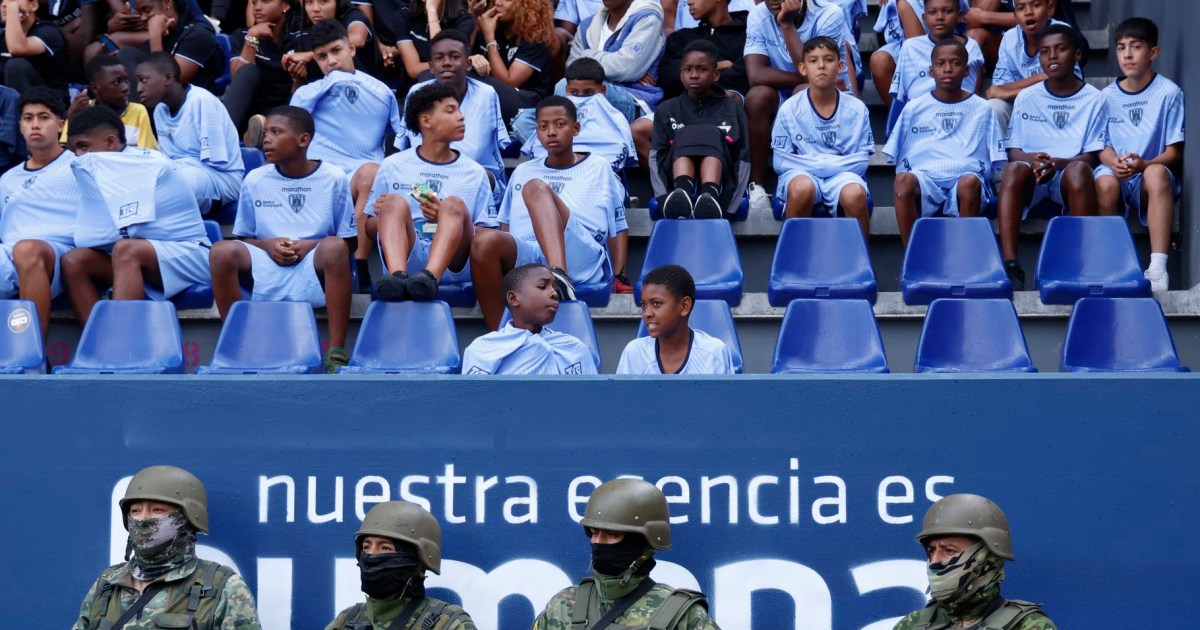By Marina E. Franco and Russell Contreras
Welcome to Axios Latino, a newsletter to tell you every week the stories that have a special impact on the Latino communities in the United States and in Latin America. If you are interested in subscribing and receiving the newsletter in your email (in English), you can do so by clicking here. Every week we will publish it in Spanish here on Noticias Telemundo. [Sign up here to read the newsletter in Spanish]
This special edition is dedicated exclusively to the coronavirus emergency that prevails from the Sonoran desert in Mexico to Tierra de Fuego in Argentine Patagonia, where
more than 1.3 million people have lost their lives
in the last year and there are not enough vaccines to protect against the next wave.
Latin America and the Caribbean account for almost 9%
of the world's population, but account for approximately one third of all deaths from COVID-19.
The pandemic has "turned into an unprecedented
economic and social
crisis
" that "could turn into a food, humanitarian and political crisis," according to the United Nations regional economic commission.
Despite this, events
with public
have continued such
as the Miss Mexico contest (where half of the contestants were infected) and the Copa América (in which at least 165 people were infected before the final between Brazil and Argentina ).
1 topic to highlight: The burden of waiting for vaccines
The region of the planet with the most deaths per inhabitant
in the last week was Latin America and the Caribbean, and the situation may still worsen due to delays in vaccination, shortage of medical equipment, supply problems for oxygen tanks and lack of personal.
Map showing the relative low vaccination rates in Latin America and the Caribbean. Data from Our World in Data;
graphic by Axios Graphics
Why it matters: Less than 10% of the Latin American and Caribbean population has been fully immunized against COVID since vaccination campaigns began in December, largely due to dose shortages.
These delays imply that the region is unprotected against a third wave of infections that is already beginning, and especially against the highly contagious delta variant, which joins the gamma variants (which began in Brazil) and lambda (which was first identified in The Andes).
Nations like Brazil, Mexico and Peru have been hot spots for coronavirus for almost a year, without much respite.
Latin America and the Caribbean is the most urbanized region in the world, with a very high percentage of the population living in highly populated cities where there are constant crowds in housing or transportation that allow easy contagion.
Several countries have also recognized that there is an undercount of infections and deaths, largely due to the lack of evidence.
In her own words
: "The region is an epicenter of suffering from COVID-19. It should also be an epicenter for vaccination," says Carissa Etienne, director of the Pan American Health Organization (PAHO).
More details
: But it depends a lot on donations of vaccines from countries like the US and Japan, and the purchase of other more affordable and easy to store, such as Chinese, Russian and AstraZeneca.
Problems with the supply and delivery of these vaccines are common.
In addition, there are preliminary studies indicating that widely used vaccines such as Sinovac are not as effective against variants such as lambda.
The highly effective messenger RNA vaccines that have been widely used in the US are very expensive to acquire, store and transport, and there are reports that when certain Latin American nations did turn to Pfizer for purchase they received “abusive” responses.
The White House has begun distributing vaccines and supplying the COVAX program, but has not yet distributed tens of millions of doses of AstraZeneca that could be extremely useful for Latin America and the Caribbean.
In Colombia there are rural vaccination brigades that since June have been going to remote communities to apply the doses.Guillermo Legaria / Getty Images
Fun fact:
Although Chile and Uruguay are success stories for having already immunized more than 50% of the population, per capita infections are still high.
Specialists believe that the problem is that people, both vaccinated and not, are trusting themselves and even making massive clandestine parties.
[No, COVID-19 vaccines do not contain microchips or connect us via 'bluetooth']
Greater context:
Many wealthy or middle-class Latin Americans have gotten around the vaccine shortage in their countries by traveling to the United States, in what has been called "vaccine tourism."
PAHO says such disparity will only worsen existing health inequalities, both while the pandemic continues and into the future.
And now what's next:
Mexico, Argentina, Chile, Honduras, Guatemala, Brazil, and Uruguay have also reported cases of the black fungus, or mucormycosis, an infection that worsens COVID-19 cases.
Medical specialists have raised the alarms that there is increasing complacency despite the continuous infections and that people let their guard down or are in trouble to relax restrictions ... or hold sports competitions.
2. Scandals, inequalities and scarcity
COVID-19 patients with less severe cases receive treatment in the corridors of a hospital in Asunción, Paraguay, as there are no beds available, on May 1.
It's a scene that has been seen in several Latin American countries over the last year.Daniel Duarte / AFP via Getty Images
Vaccination campaigns
and the health response have been hampered above all by the ravages of corruption.
Scandals since the pandemic began include Bolivia buying useless respirators at inflated prices;
that Argentina acquired N95 masks at extra cost;
and a poorly managed operation in Honduras of tents for emergency field hospitals that began operating up to seven months after that emergency began.
There was also a
Vacunagate
in Peru, Chile, Ecuador and Argentina, when politicians and their relatives and friends were secretly given the first doses to arrive.
In Brazil,
the president, Jair Bolsonaro, faces a possible impeachment for apparent bribes in the contracts to buy two vaccines, while there is controversy over an opaque agreement in Guatemala to buy millions of doses of Sputnik V that have not been delivered.
There are protests calling for the resignation of the president, Alejandro Giammattei.
Read between the lines:
Public hospitals were already suffering financing problems, with a lack of equipment and medicines, when COVID-19 arrived in the region.
With the pandemic, many have been on the brink of collapse.
In part it is due to the consequences of past diversion of funds, given that several nations in Latin America and the Caribbean are consistently ranked among the most corrupt in the world.
3. The perfect storm of economic impact
The widespread informality in the economy
and the dependence of many countries on tourism have made infections more easily spread and it is more difficult to control the negative impacts of the pandemic.
Why it matters:
More than half of workers in Latin America and the Caribbean live day to day in informal jobs: unregulated, untaxed, and precarious (no contracts or a social safety net).
Those millions of street vendors, domestic workers, maquila workers and more cannot work from home, nor can they afford to stay home even if they get sick.
The region also has many multigenerational homes that are sometimes unsanitary, and people tend to travel crowded on public transport that hardly allows social distancing.
All of this increases people's exposure to coronavirus and reduces the effectiveness of lockdowns and quarantines.
The general situation
: Extreme poverty in the region soared during 2020 to 33%, the highest rate in at least two decades, and women's labor force participation plummeted.
The global drop in travel also implied heavy losses in employment and public income, with especially pronounced effects in Caribbean nations dependent on tourism such as the Dominican Republic, Haiti and Cuba.
Experts fear that Latin America and the Caribbean will take longer than other regions to rebound towards growth and warn that there could even be another lost decade like the zero growth decade in the 1980s.
The Caracas metro on May 26.
Social distancing is difficult to obtain in the vast majority of Latin American public transportation.Michael Mata / Eyepix Group / Barcroft Media via Getty Images
4. The lasting and devastating consequences
The immediate effects of the pandemic
go far beyond infections or the economy, deepening social inequalities that will hit the region for decades.
A huge new cemetery in São Paulo for recent COVID-19 victims.
More than half a million people have died in Brazil from the pandemic.Marcello Zambrana / Anadolu Agency via Getty Images
In Context:
Discontent toward governments over their handling of the COVID-19 crises has sparked protracted and sometimes violent protests.
There is anger towards, among others, the presidents of Mexico and Brazil for underestimating the dangers of the pandemic even after they themselves became infected, and towards the Government of Colombia for promoting higher tax reforms amid the economic slowdown and layoffs.
Millions of students have dropped out of school in the region, which has closed its classrooms longer than any other in the world.
The UN warns that many of these young people may not return to the classroom.
Several advances have been undone against other medical ills, such as the region's reductions in maternal mortality or against hunger and malnutrition.
Emigration and displaced people
in their own country have also been skyrocketed by increasing unemployment and homelessness.
Access to justice and long-awaited political changes
have also been postponed and stopped, with the closure of government offices.
In Mexico there are cases of domestic violence and abuse of indigenous people that have not made progress despite being urgent.
In Chile, the historical process to draft a new constitution has had unexpected incidents, such as having to postpone its expected first session considering that there was a risk of contagion in the place where it will meet.
5. Latinos in the United States after a year of pandemic
The coronavirus has disproportionately hit Latino and black people
in the United States, and has even been more deadly for young Latinos than for youth from other demographic groups.
In figures:
Non-Hispanic white citizens account for 61% of COVID-19 deaths in that country, while Latinos account for 19%.
However, Latinos are two to three times more likely to die if infected, according to data from the Centers for Disease Control and Prevention (CDC).
And in contrast to the high death rates from coronavirus, Latinos in the United States are among the least vaccinated groups in the country, according to data from the specialized group Kaiser Family Foundation.
6. Coping with difficulties
Tortillería provides Wi-Fi to low-income children when they return to school
Sept.
7, 202001: 41
In the darkness
of the pandemic, there are people who have found ways to continue to overcome.
More details
: In Buenos Aires, taxi drivers who feared unemployment began to transport patients and health personnel and now they have become exclusively vehicles to support those fighting the pandemic.
In Mexico, the owners of a tortillería saw that it was necessary to help children in the area that did not have internet or devices with which to connect to virtual classes.
The tortillería began to offer Wi-Fi and tablets, and even a tutorial room.
Artisans from nations such as Peru, Colombia, Mexico and Ecuador who depended on selling to tourists have managed to adapt to internet sales or have also turned their art around to maintain their sales, such as making hand-woven masks or marketing cremation urns. specially decorated.
Mexican artisans reinvent themselves and turn traditional rag dolls into Catrinas
Oct. 23, 202001: 38
Thanks for reading, until next week.
Do you want to see any of the previous editions?
- A pain for the whole hemisphere
- The shedding of innocent blood
- A heat-battered border thirsts for protection
- Drowning for the American Dream
- The pandemic does not give truce, but football continues
- What worries Hispanics most in the US
- The effects of trying to study when there is COVID-19
- Mexico in mourning;
Colombia and Puerto Rico demand justice
- A controversial count that does not favor Hispanics


/cloudfront-eu-central-1.images.arcpublishing.com/prisa/EMYXC3EVHNEG3OJHGIQCB2IVYA.jpg)






